Students at UCSB
UCSB has about 28,000 undergraduate students and 2,700 graduate students who come from a range of backgrounds. This page provides ideas to make diversity matter in your classroom and best practices for helping your students succeed.
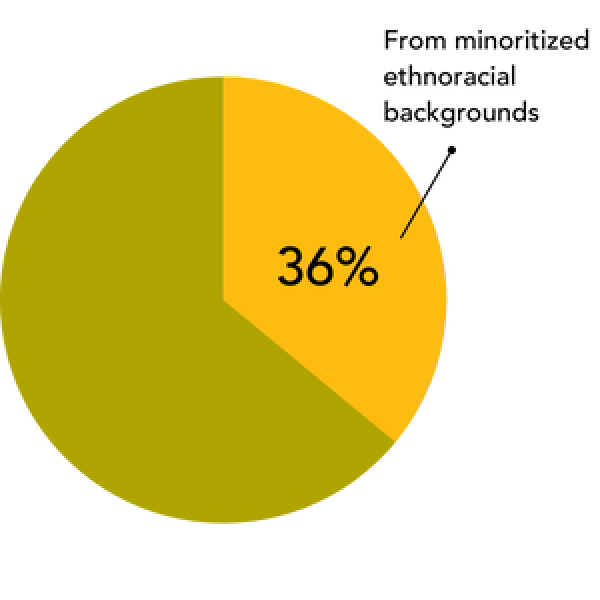
36% of students come from minoritized ethnoracial backgrounds. This aggregated number is based on the U.S. Department of Education classifications, which include students who identify themselves as Black/African American, Latinx, Chicanx, and Native American.

29% of UCSB undergraduate students are transfer students, which means they have transferred from another institution typically in their third year.
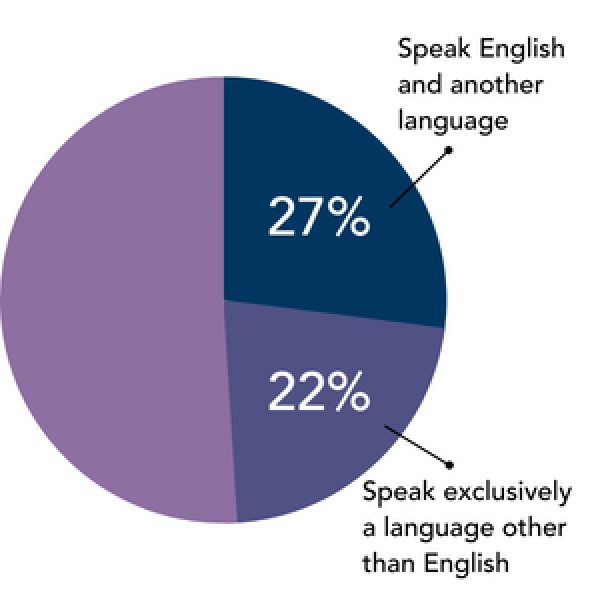
27% of UCSB undergraduates speak English and another language in their households and almost 22% speak almost exclusively a language other than English in their household.
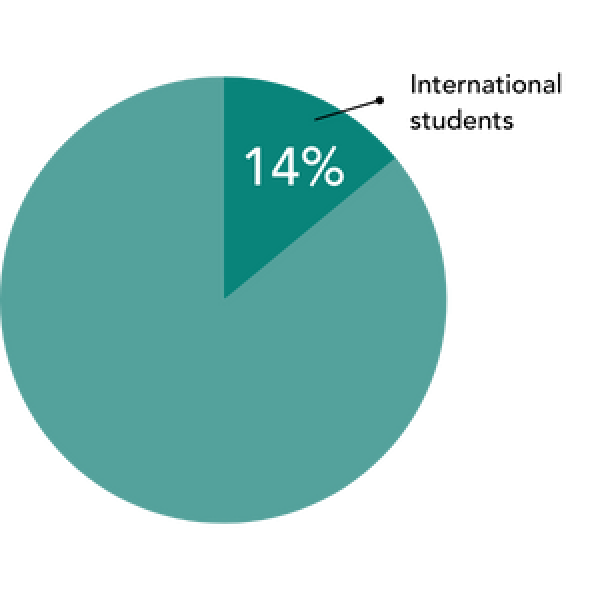
About 14% of UCSB students are International students who come from more than 80 countries/regions.
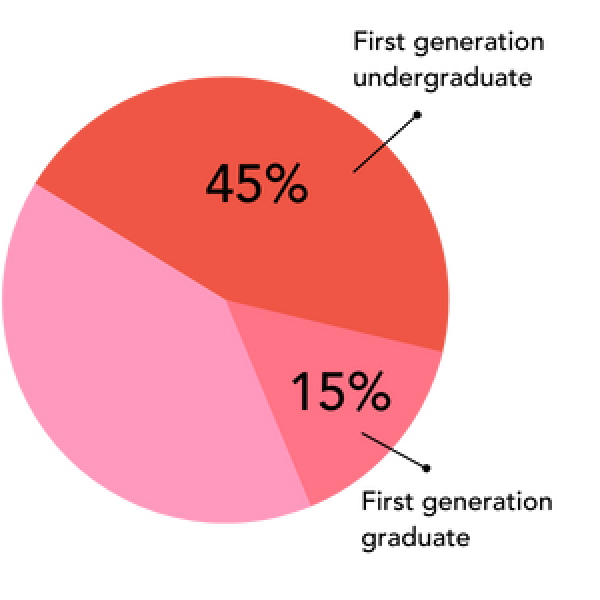
45% of UCSB undergraduate students and 15% of graduate students are first generation students, which means they are among the first in their families to graduate from a four-year institution in the United States.
First Generation Students' Experiences
This video is a collection of experiences from UCSB students who are the first in their families to attend university.
UC Santa Barbara is a Minority Serving Institution.
Due to the high undergraduate enrollment of Latinx/Chicanx, Asian American, and Pacific Islander students, UCSB was designated as a Hispanic-Serving Institution (HSI) and an Asian American, Native American, Pacific Islander-Serving Institution (AANAPISI), by the US Department of Education in 2015. These designations grant funding to help the campus provide support to these populations both in and out of the classroom.
Support for Teaching Students at UCSB
Below are some teaching practices that are supportive for all students, but are most supportive to minoritized student groups in the classroom.
Administer a pre-course survey to gain insight about the diversity your students bring to your classroom. Your survey questions can focus on students’ backgrounds, academic experiences, learning preferences, professional goals, and more. Consider using the Google Form Template with the following questions, and choose or adapt them for your needs.
- What other courses have you taken in this department?
- What topics in this course are you most interested in or excited about?
- Is there any content or topics that you would like a trigger/content warning for?
- What are your career goals and how might they relate to the topics in this course?
- How do you plan to study for this course?
- Are you interested in making friends to study with?
- What do you wish your past instructors had known about you?
Making diversity matter in your classroom means helping students consider multiple perspectives, contribute their own ideas and experiences, and create mutually respectful learning communities. It depends on a number of factors including your teaching style, course size, course content, learning outcomes, etc. Adapt your pre-course survey and course materials to maximize students’ contributions and connections to the course.
- Use language and concepts that are appropriate for students’ level of experience in the field.
- Give students (a limited set of) choices to provide space for them to use their agency in learning (e.g. of readings, role-plays, assignments).
- Add examples for trigger/content warning.
- Use examples that relate to students’ experiences, interests and career goals. Infuse people, history, and social context as well as opportunities for students to identify with course content to increase engagement.
- Provide opportunities for students to contribute their experiences and ideas related to the content.
- Explicitly explain how concepts and skills relate to students’ personal and professional goals.
- Make assessments (exams, homework, projects) authentic, meaningful, and applicable outside of the classroom.
- Use section or lecture time to workshop best practices for studying for the exams and completing assignments.
- Maximize student-student interaction (e.g. Use small group discussions, group projects with meaningful collaborations, group backchannels and forums, etc.)
Use powerful strategies that empirical research shows supports all students in their learning – and particularly minoritized students. Many of these techniques are easily adaptable to different disciplines and course styles.
- Make an effort to learn your students' names using “name tents” or other mechanisms. Studies show that students’ perform better in their courses if they perceive that their instructors know their names.
- Go beyond explaining content; infuse “Instructor Talk” to build instructor/student relationships, establish classroom culture, explain pedagogical choices, share personal experiences, and unmask science.
- Adopt a hybrid or highly blended course format by replacing some class time with online, asynchronous highly structured, student-centered assignments.
- Carefully explain and reiterate the expectations laid out in the syllabus as well as “hidden rules” for success in the university (e.g. email etiquette, campus resources).
- Use Canvas email or comments in Speedgrader to send your students “light touch feedback”. Studies show that students’ grades improve after receiving quasi-personalized feedback that applauds a job well-done or provides assistance for students who underperformed.
- Support students’ wellbeing by considering a “trauma informed pedagogy” as well as meeting common students’ recommendations such as being approachable, offering more feedback, and being aware of student services that are helpful for their success in your class.
- Combat microaggressions that hinder students’ sense of belonging with affirming cues and acts that respect the importance of difference in spaces of learning.
- Design courses using a mixed methods of assessment. Studies have shown that giving lower-stakes exams and assignments as well as counting participation and group-work can reduce performance gaps.
Consult additional research-informed pedagogy from the Center of Innovative Teaching and Research at UCSB to help your students.

ONDAS Student Center provides mentoring and academic support for first-year and historically underrepresented students.

MultiCultural Center offers educational programming, student engagement, and community outreach.
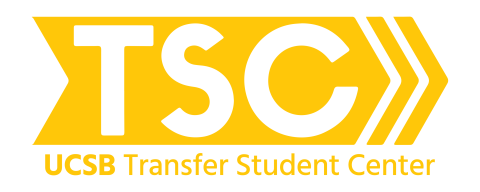
Transfer Student Center provides transfer students with personal connections, resources, and success pathways.

First-Generation College Students are supported at UCSB at the undergraduate and graduate levels.

Campus Learning and Assistance Services offers student workshops and resources for STEM subjects, writing, and language.
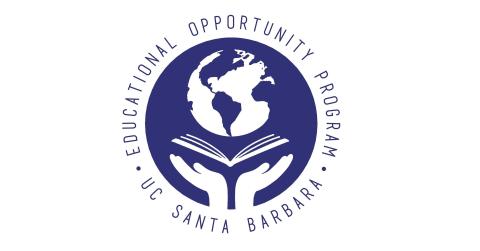
Educational Opportunity Program (EOP) sponsors cultural centers that offer opportunities for student support, involvement, and learning.